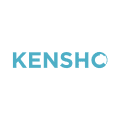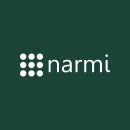Forgive Mario Gomez-Hall for his bookish sensibilities. The functionality of QR codes might exist beyond the average consumer’s comprehension, but the widespread adoption of the ubiquitous square grids has the head of design at social network Saturn excited for the year ahead.
“This might sound nerdy, but it’s been a long time coming!” Gomez-Hall beamed. “QR codes save so much time, but the U.S. was slower to the trend. It wasn’t until the pandemic forced everyone to scan them to order food that people realized the value of not having to type in /xv72p98a to eat dinner.”
But summoning mozzarella sticks from your phone is just the beginning, Gomez-Hall said. QR codes, it turns out, can do more than just drive website traffic with physical marketing materials: They’re a tool he’s incorporating into Saturn’s wider user interface.
“Increasing the use of QR codes can save our users time and contribute to a more rewarding experience for them,” Gomez-Hall said. “Since most consumer apps tend to adopt the same UX best practices, I’m sure we’ll contribute to moving that trend forward.”
QR codes are just one example of the trends energizing designers in 2022. As Built In NYC learned through conversations with four local tech professionals, there’s plenty of innovation to look forward to when it comes to improving customers’ digital experiences.
What’s a UX/UI trend that has you excited for 2022?
I’m really excited about widespread QR code adoption. They save so much time, and much of the world has already adopted them since they were invented in 1994.
How do you plan to incorporate this trend into your work in the year ahead?
We’ve actually already started incorporating QR codes into — and outside of — Saturn. We have these cool physical QR code stickers that students can put up at their schools. By scanning the sticker, students can skip a lot of the manual setup when creating their accounts, because we can automatically add their school, class schedule and other information that is already embedded in the QR code. We’re looking forward to further incorporating codes into our app to do things like quickly add a class from another student’s phone, or automatically add recurring soccer practices or club meetups to everyone’s calendar during the first meeting of the year.
Saturn is all about giving our users time back and helping them use that time to forge real-world connections.”
How do you see this trend evolving in the future?
When I scan a QR code, it instantly takes me to a hard-to-type link or opens an app to the right screen that would otherwise be hard to navigate. It’s providing a shortcut to something very specific without a lot of input from the user. That’s a goal every app, product or service should strive for. Saturn is all about giving our users time back and helping them use that time to forge real-world connections. Whether it’s QR codes or something else entirely, we’ll keep making our app faster and easier to use in order to help people find what they’re looking for without a lot of work on their end.
Oh, and as a designer, I can’t talk about QR codes without saying that I’d love it if we could make them a little bit nicer-looking. There’s a reason people were hesitant to scan them in the first place.
What’s a UX/UI trend that has you excited for 2022?
The continued evolution of digital wallets, especially with respect to identity verification. Apple recently announced that the company is partnering with a number of states to make state-issued IDs compatible with Apple Wallet, and I’m very interested to see how the sense of identity in our increasingly all-digital world progresses. Apple’s initial execution is designed for touchless TSA verification at airports, but I’m looking forward to future executions where device-secure biometric data like Face ID can be used to bypass laborious onboarding processes that require identity verification.
I’m excited because innovations like this enable customers to start a relationship with a company, from an airline to an investing app like Stash, anywhere at any time. As digital wallets become increasingly adopted, we as product designers can continue to build synchronized experiences for customers that deliver all of the value and none of the hangups.
How do you plan to incorporate this trend in your work in the year ahead?
In the coming year, my team will be working to fix an issue that many customers who have started a relationship with Stash have encountered. Identity verification is integral to opening an investment account, but it can cause headaches for folks who do not have bank accounts elsewhere, their ID on hand or a social security number. When a potential customer’s goal at the moment of app download is to explore their investment options with Stash, the identity verification process can be a frustrating roadblock.
Stash is at an exciting inflection point where we have a strong customer base and are growing, but we also know that in order to continue succeeding, we must obsess over the customer at each and every turn — even when a customer takes a wrong turn. Unlocking identity — and finding ways to verify folks in new and smoother ways so that they can start building wealth — is just one of the top initiatives Stash is undertaking in the coming year to deliver on our promise of investing for the 99 percent.
We must obsess over the customer at each and every turn — even when a customer takes a wrong turn.”
How do you see this trend evolving in the future?
Stash has the opportunity to execute on just one application of this evolution toward an all-digital personal identity, but the possibilities in this space are endless. In order to continue to expand on this trend, it’s important to keep in mind that it is our responsibility as the makers of these technologies to uphold and cherish the trust of the consumer.
What’s a UX trend that has you excited for 2022?
This is perhaps an obvious answer for someone who works at Kensho Technologies, but I’m really excited about the design opportunities and challenges as machine learning becomes an integral part of products across every industry. As designers, we can create increasingly advanced and sophisticated products, but we also have a responsibility to think deeply about what machine learning is doing for the user, how we explain an AI model’s choices and how we can incorporate user feedback to improve those results in the future. Depending on the product, this can get into some really interesting — and really thorny — challenges in creating transparency and earning trust in AI. For better or worse, the way we structure and present AI to users will make a huge difference in their lives.
How do you plan to incorporate this trend in your work in the year ahead?
At Kensho, every product we design and build is powered by state-of-the-art machine learning capabilities. But even the best machine learning models aren’t perfect, so it’s crucial that we create interfaces that help users understand where an AI model’s recommendations are coming from. It’s also useful for us to know where it falls short of the user’s expectations. With the right user experience, we can save people vast amounts of time and effort, earn their trust in the results they see and integrate feedback mechanisms to train the underlying AI models to do even better in the future.
It’s crucial that we create interfaces that help users understand where an AI model’s recommendations are coming from.”
How do you see this trend evolving in the future?
To an extent, AI already affects many areas of our lives. As time progresses, though, it is increasingly being woven into our lived experiences. One of the big questions of our time is, how much will we be able to manage AI’s influence, control the feedback we provide to machine learning models and see where a model’s choices are coming from?
I hope that Kensho’s products will not only push forward AI capabilities, but also the communication of AI’s choices and recommendations so that users have access to unprecedented knowledge and unprecedented transparency as they make decisions.
What’s a UX trend that has you excited for 2022?
I’ve been seeing more and more companies invest in a proper design system. This allows for greater consistency across a product, which makes the experience feel much easier for the end user.
At Narmi, we’ve built our own design system that serves as a “single source of truth” library that documents every design component used across our digital banking platforms, along with a set of guidelines and source code that instructs designers and developers on how to build with these components.
How do you plan to incorporate this trend in your work in the year ahead?
We’ve built an open-source design system, which helps the whole digital banking user experience feel more unified. Previously, we had a lot of different components for the same thing, like different shades of gray for a background color when we should really have just one shade. Our design system makes it easier for us to be consistent going forward.
Ultimately, a proper design system allows us to design with consistency, innovate faster and enable a better user experience across our account-opening, consumer digital banking, business banking and administrative platforms.
A proper design system allows us to design with consistency, innovate faster and enable a better user experience across our platforms.”
How do you see this trend evolving in the future?
I predict that there will be more and more automation with design systems, making them easier to use. It will definitely reduce the number of errors and inconsistencies that occur when an engineer is bringing a design file to life.











